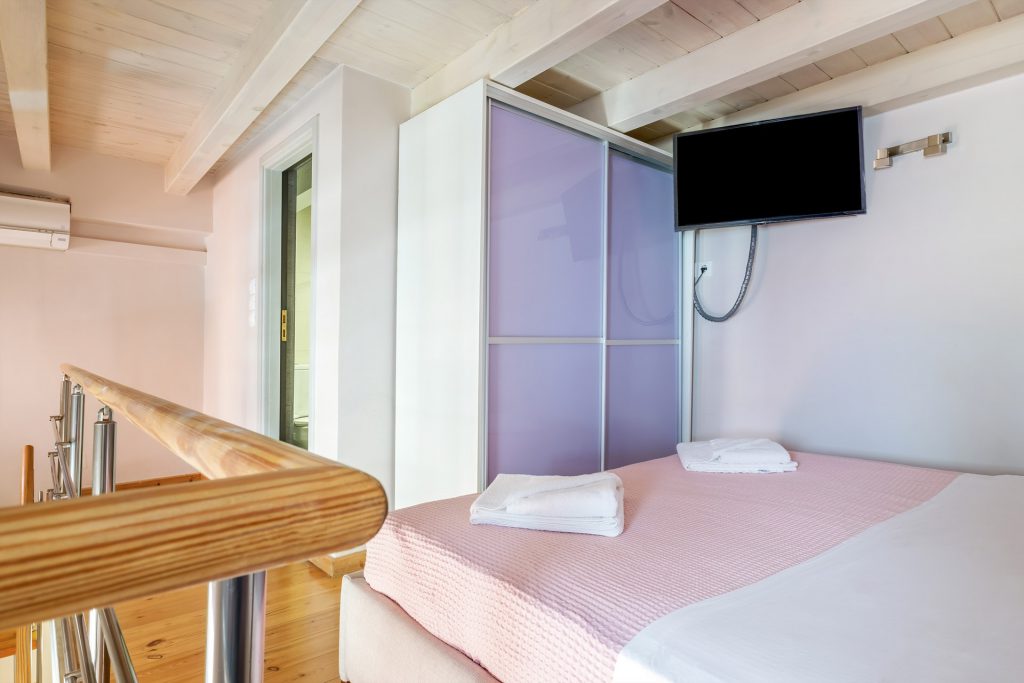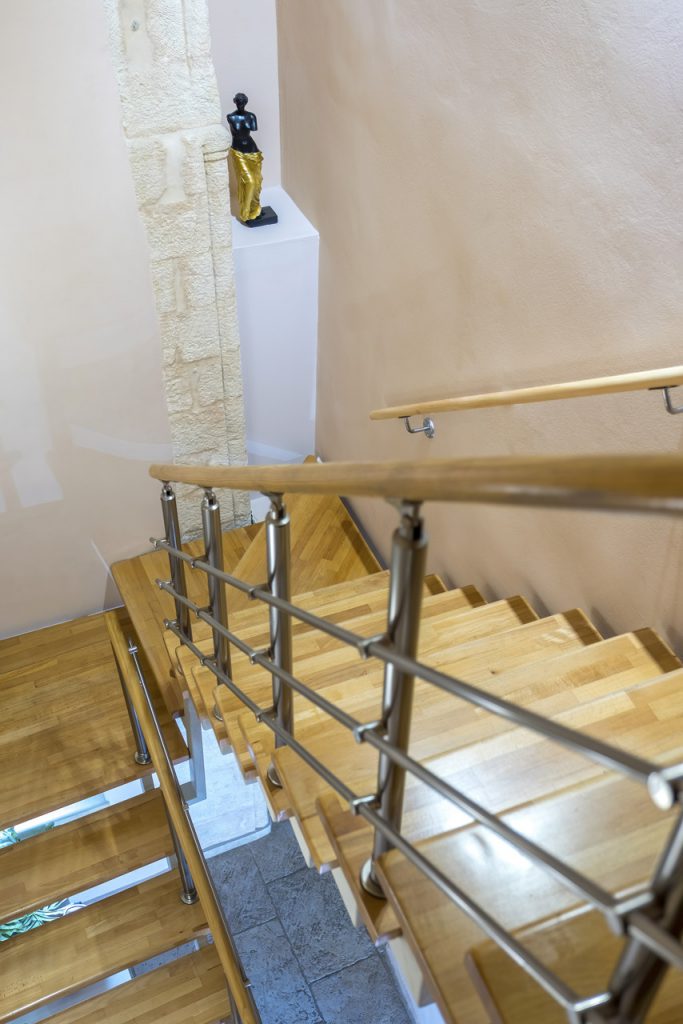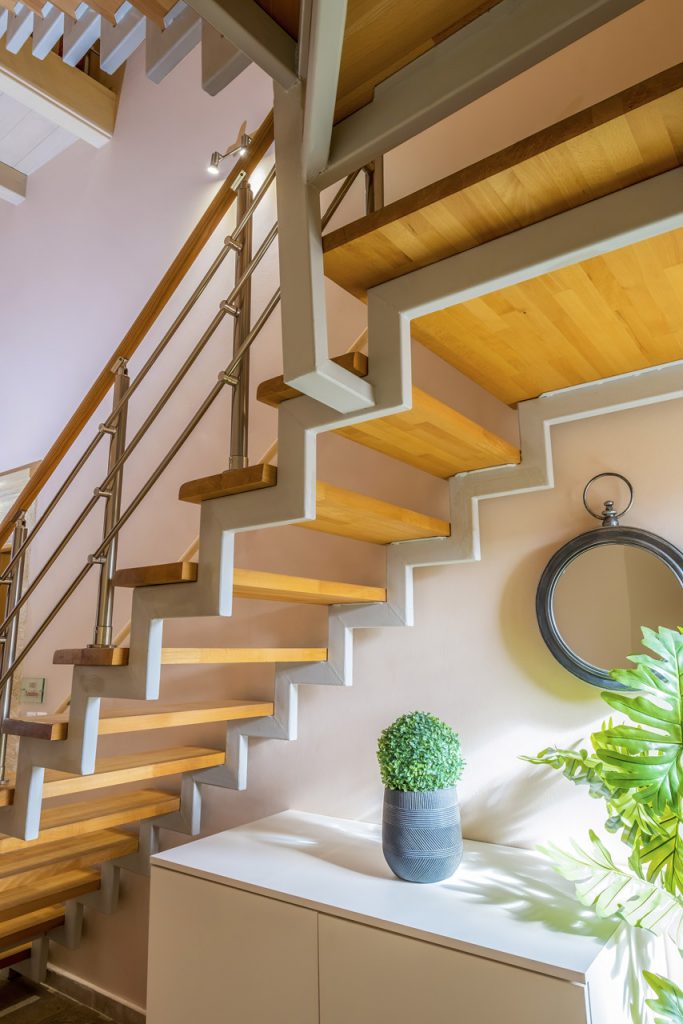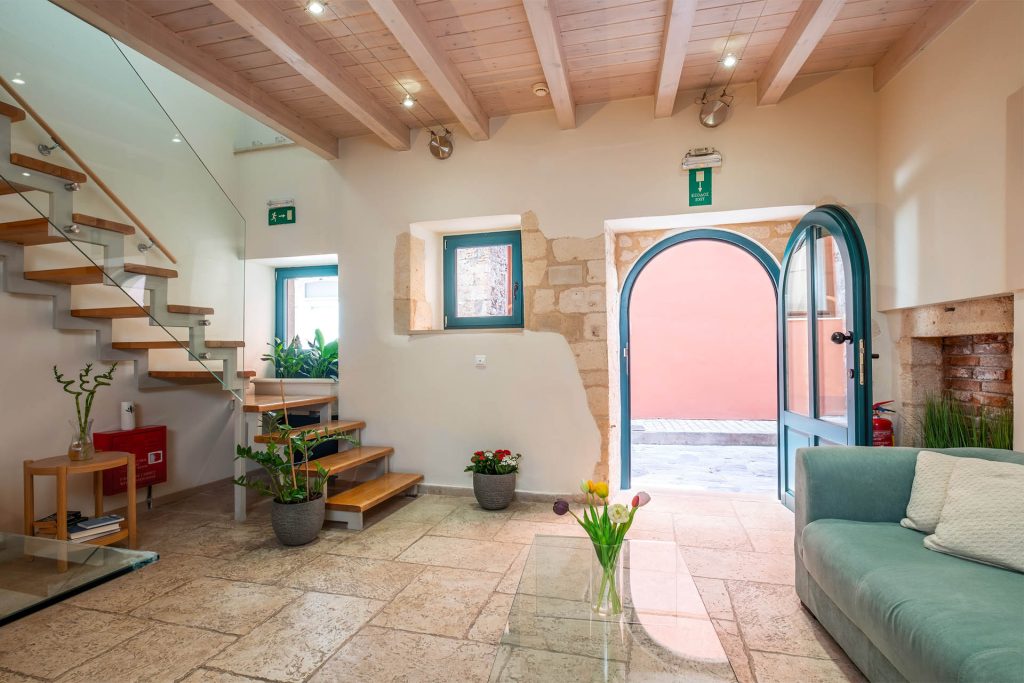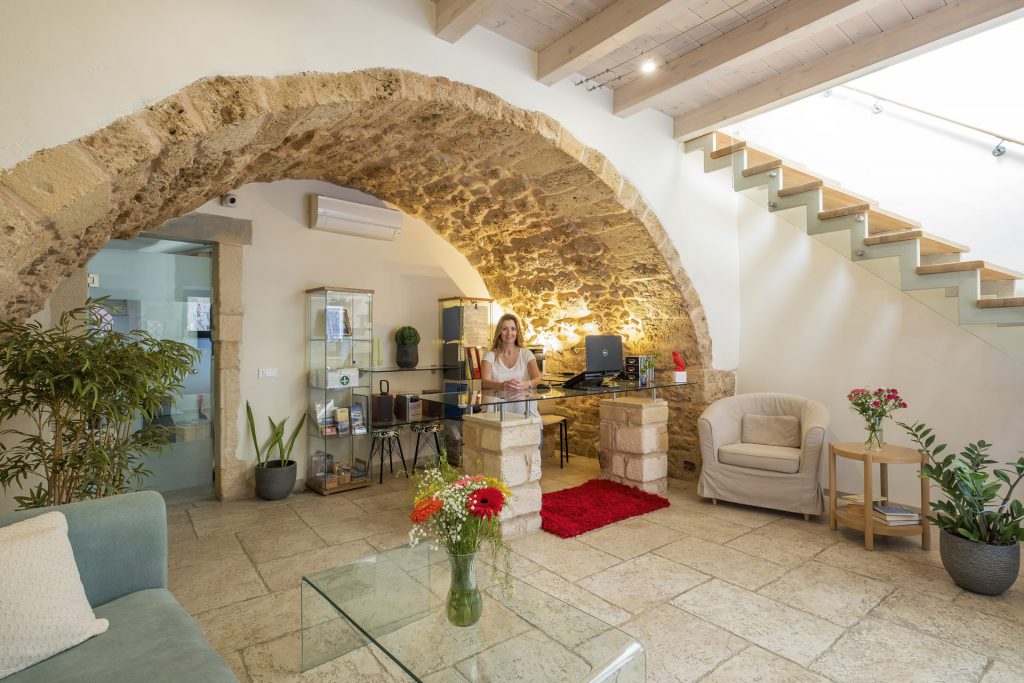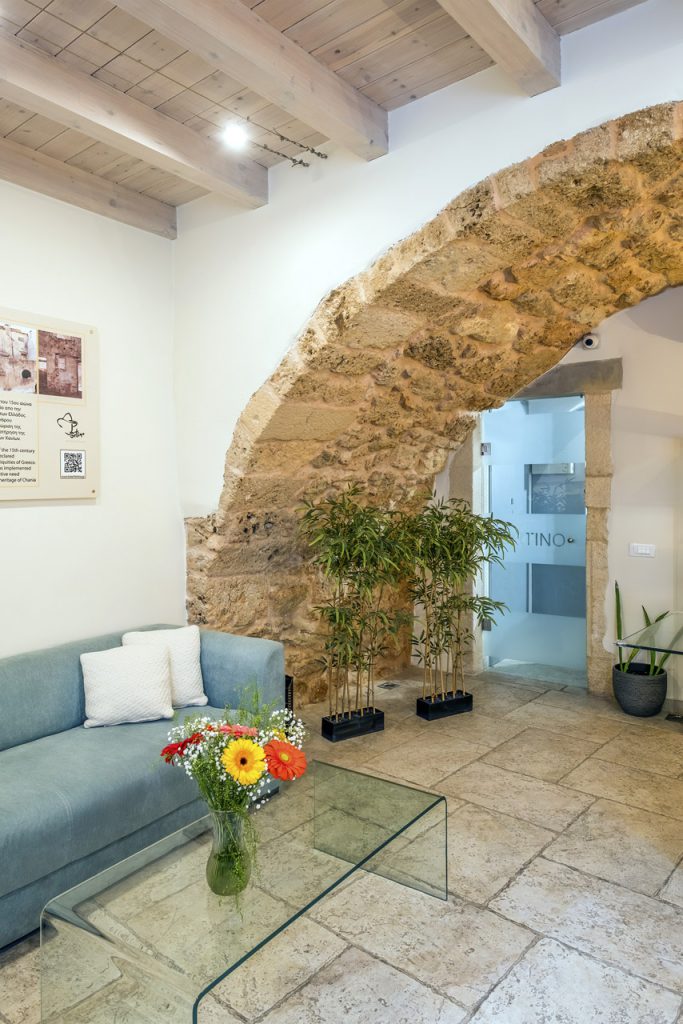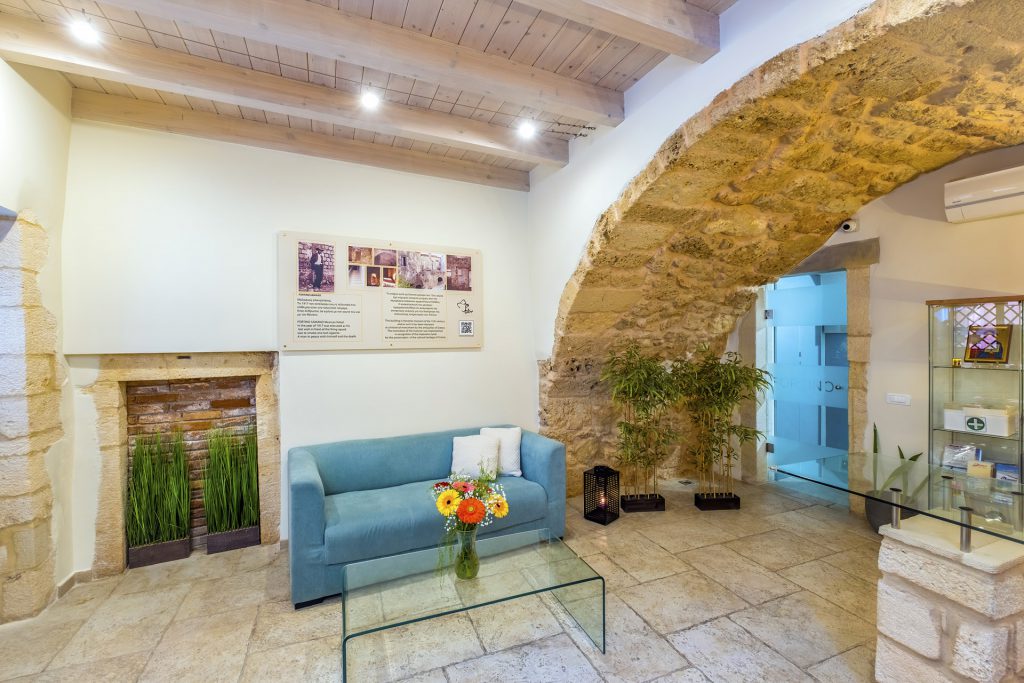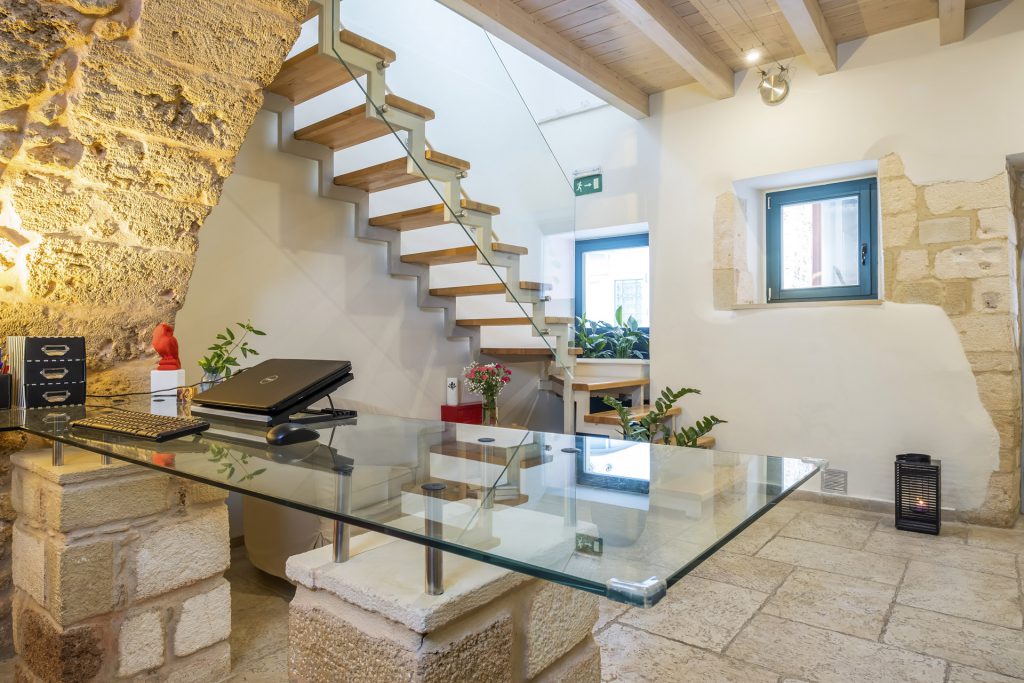At the entrance to the harbour, the Gritti bastion, lies the restored Venetian Firkas Fortress, that nowadays houses the Naval museum. Opposite you see the Venetian lighthouse, built in the 16th century. Continue along the best preserved part of the city wall, from the Gritti to the Schiavo bastion. Chania’s city wall, as part of fortification works against the Turkish threat, was designed by engineer Michele Sanmichele.
Here in the Topanas quarter you can see some of the most picturesque Venetian houses adorning the little alleys. Pass the Renieri gate and admire its elegant arch that is part of the palazzo of the Renieri family, complete with private chapel. Continue your way through the Medieval Jewish quarter; here lies the 15th century Etz Hayyim synagogue, renovated and reopened in the 1990s after it was closed and in a miserable state for a long time.
Head for shopping street Halidon on the way passing the Schiavo bastion. If you take the trouble to ascend it, you have a stunning view of the old houses around the harbour, the hilly Kastelli quarter and the Lefka Ori (the White Mountains) to your south.
If you’re not, follow Halidon towards the Harbour, on the way practically bumping into the Cathedral, a rather plain church from the 1860s. Clustered around the Cathedral square are a whole range of cafes and restaurants. On the same courtyard, opposite, lies the Archeological Museum, that is housed in the Venetian San Francesco church, with practically next to it the Folklore museum, established in the elegant Roman-Catholic church building.
Walking further down to the harbour, you’ll recognize the Mosque of the Janissaries, with its profile dominating the Harbour view like a giant football. It is the oldest Turkish building on the island, dating from 1645, immediately after the Turks settled in Chania. Nowadays it is used as an exhibition hall. Continue along the harbour with the minaret lighthouse in its background on the other side of the quay.
It is well worth the 1.5km stroll for a breathtaking view of Chania by night.
The quarter of Kastelli, the earliest inhabited area of Chania that lies on a little hill, was heavily bombed during WWII, when next to nothing was left of the former centre of Venetian and Turkish rule. Here are also the fenced sites of Minoan Kydhonia.Passing the Arsenali, the 16th century Venetian shipyards, follow Daskaloyanni Street to reach 1821 square with its churches: Ayios Nikolaos with on its top a minaret.
Built by the Venetians, it was converted into a mosque by the Turks, as most churches were, only to be reconsecrated after the Turks left.
The Turkish minaret seen from a distance belongs to the former Ahmed-Aga mosque and is worth a look, though it may be closed to visitors. Continue by visiting the covered Market Hall with its many excellent eateries, and its food stalls with a wide variety of fruits, fish and meat. Take a break!
From here, take the route back to the harbour by way of the Turkish Splantzia quarter with its maze of narrow streets and alleys, set in an atmospheric decor of 1001 Nights. South-east of the Market Hall in the new town you can reach the Public Garden, where there’s a mini-zoo along with a coffee house surrounded by trees and a children’s playground.At the entrance to the harbour, the Gritti bastion, lies the restored Venetian Firkas Fortress, that nowadays houses the Naval museum. Opposite you see the Venetian lighthouse, built in the 16th century. Continue along the best preserved part of the city wall, from the Gritti to the Schiavo bastion. Chania’s city wall, as part of fortification works against the Turkish threat, was designed by engineer Michele Sanmichele.
Here in the Topanas quarter you can see some of the most picturesque Venetian houses adorning the little alleys. Pass the Renieri gate and admire its elegant arch that is part of the palazzo of the Renieri family, complete with private chapel. Continue your way through the Medieval Jewish quarter; here lies the 15th century Etz Hayyim synagogue, renovated and reopened in the 1990s after it was closed and in a miserable state for a long time.
Head for shopping street Halidon on the way passing the Schiavo bastion. If you take the trouble to ascend it, you have a stunning view of the old houses around the harbour, the hilly Kastelli quarter and the Lefka Ori (the White Mountains) to your south.
If you’re not, follow Halidon towards the Harbour, on the way practically bumping into the Cathedral, a rather plain church from the 1860s. Clustered around the Cathedral square are a whole range of cafes and restaurants. On the same courtyard, opposite, lies the Archeological Museum, that is housed in the Venetian San Francesco church, with practically next to it the Folklore museum, established in the elegant Roman-Catholic church building.
Walking further down to the harbour, you’ll recognize the Mosque of the Janissaries, with its profile dominating the Harbour view like a giant football. It is the oldest Turkish building on the island, dating from 1645, immediately after the Turks settled in Chania. Nowadays it is used as an exhibition hall. Continue along the harbour with the minaret lighthouse in its background on the other side of the quay.
It is well worth the 1.5km stroll for a breathtaking view of Chania by night.
The quarter of Kastelli, the earliest inhabited area of Chania that lies on a little hill, was heavily bombed during WWII, when next to nothing was left of the former centre of Venetian and Turkish rule. Here are also the fenced sites of Minoan Kydhonia.
Passing the Arsenali, the 16th century Venetian shipyards, follow Daskaloyanni Street to reach 1821 square with its churches: Ayios Nikolaos with on its top a minaret.
Built by the Venetians, it was converted into a mosque by the Turks, as most churches were, only to be reconsecrated after the Turks left.
The Turkish minaret seen from a distance belongs to the former Ahmed-Aga mosque and is worth a look, though it may be closed to visitors. Continue by visiting the covered Market Hall with its many excellent eateries, and its food stalls with a wide variety of fruits, fish and meat. Take a break!
From here, take the route back to the harbour by way of the Turkish Splantzia quarter with its maze of narrow streets and alleys, set in an atmospheric decor of 1001 Nights. South-east of the Market Hall in the new town you can reach the Public Garden, where there’s a mini-zoo along with a coffee house surrounded by trees and a children’s playground.

